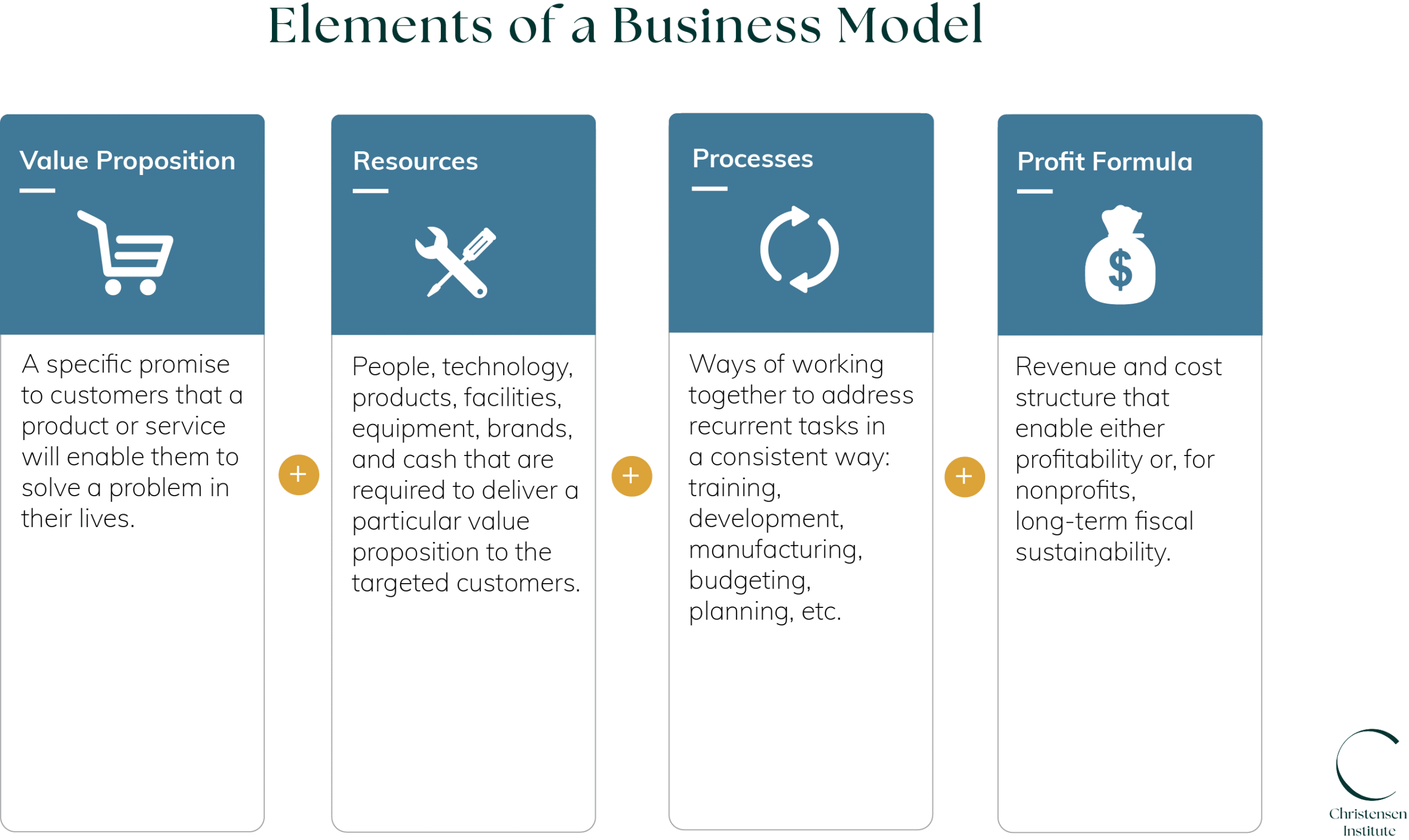Elements of a Business Model
Value Proposition
The first component of the business model is the value proposition, or the set of value propositions a company offers its customers. These are the promises an organization makes to fulfill customer needs or goals. Most businesses have multiple value propositions delivered to customers as products or services.
Resources
Resources are required to deliver value propositions. These are assets— people, technology, products, facilities, equipment, brands, and cash—both tangible and intangible.
Processes
As an organization strives to deliver its value propositions repeatedly and effectively, processes emerge. These are the habitual ways of working together as people address repeated tasks successfully. Some processes are explicitly stated, documented, and followed. Others are unstated and executed as part of the unspoken culture. Examples include training, budgeting, planning, etc. These processes are crucial for achieving repeated success and maintaining a competitive edge.
Profit Formula/Revenue
Organizations create a profit formula to cover all the costs associated with the resources and processes needed to deliver on the value propositions and establish a margin to promote sustainability. This defines how the company will maintain viability and sustainability to support its cost structure over time.
The ways in which the four components reinforce one another make the business model highly interconnected, as resources and processes are replicated, repeated, improved, and standardized. Thus, it’s more challenging to alter the longer it exists.


